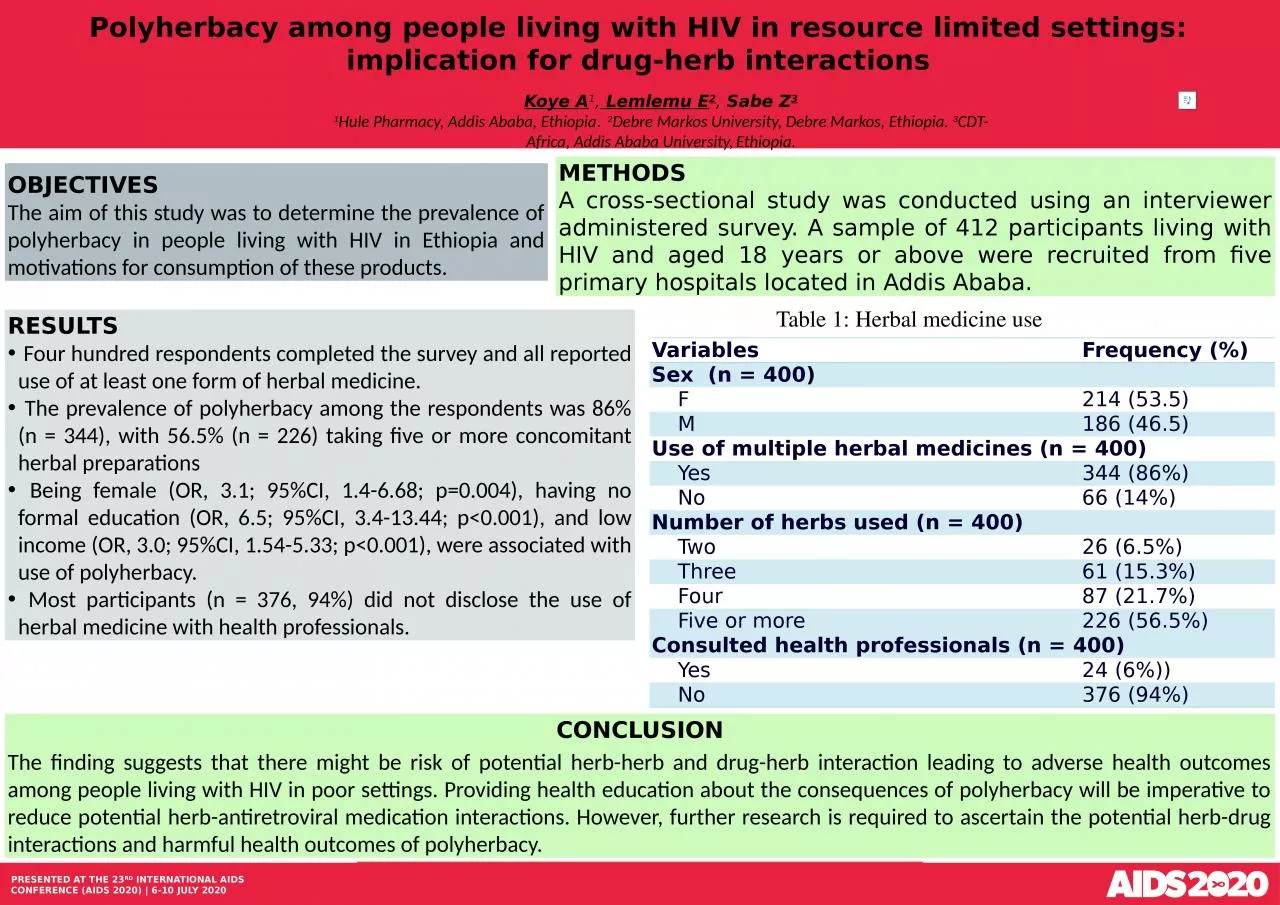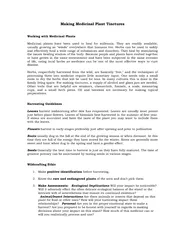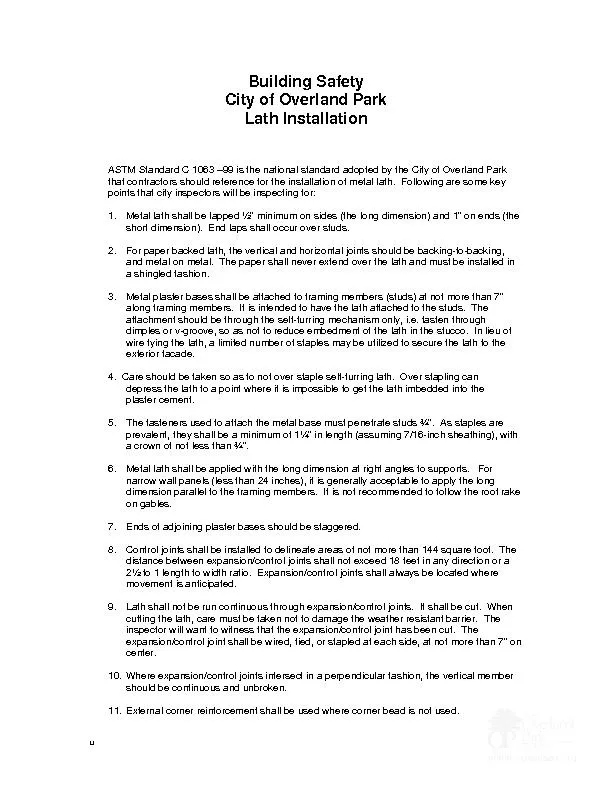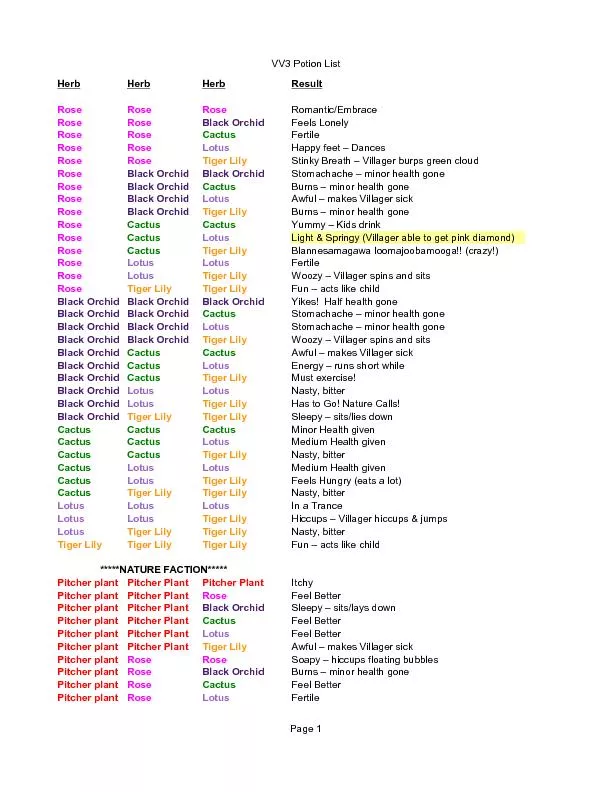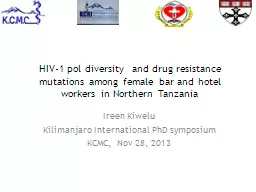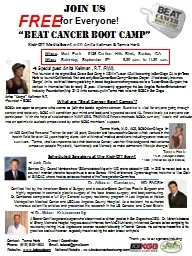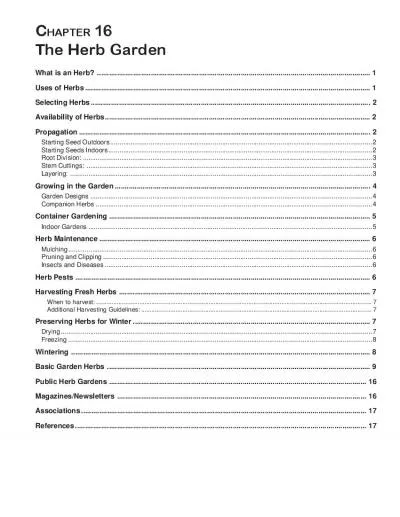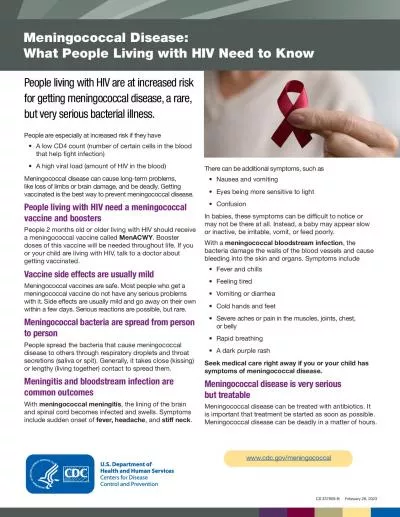PPT-Polyherbacy among people living with HIV in resource limited settings: implication for
Author : bery | Published Date : 2023-07-17
Koye A 1 Lemlemu E 2 Sabe Z 3 1 Hule Pharmacy Addis Ababa Ethiopia 2 Debre Markos University Debre Markos Ethiopia 3 CDTAfrica Addis Ababa University Ethiopia
Presentation Embed Code
Download Presentation
Download Presentation The PPT/PDF document "Polyherbacy among people living with HIV..." is the property of its rightful owner. Permission is granted to download and print the materials on this website for personal, non-commercial use only, and to display it on your personal computer provided you do not modify the materials and that you retain all copyright notices contained in the materials. By downloading content from our website, you accept the terms of this agreement.
Polyherbacy among people living with HIV in resource limited settings: implication for: Transcript
Download Rules Of Document
"Polyherbacy among people living with HIV in resource limited settings: implication for"The content belongs to its owner. You may download and print it for personal use, without modification, and keep all copyright notices. By downloading, you agree to these terms.
Related Documents

